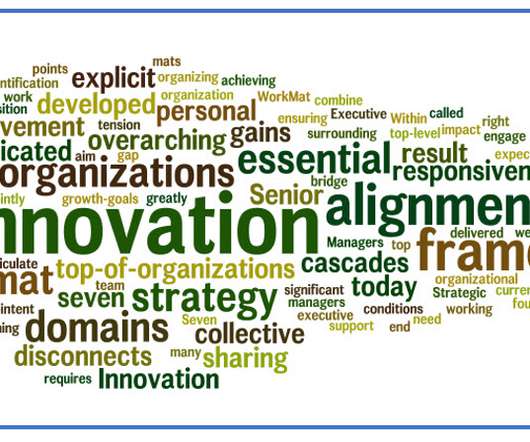So Where Is Innovation Heading?
Paul Hobcraft
MARCH 27, 2018
Digital is demanding so much in new processes that need to be more agile, responsive, reflective of new insights at increased speed and fluid in the design of those undertaking the solution to react. This agility needs the tools of testing, feedback, and adaptation to accelerate the innovation process.






















Let's personalize your content